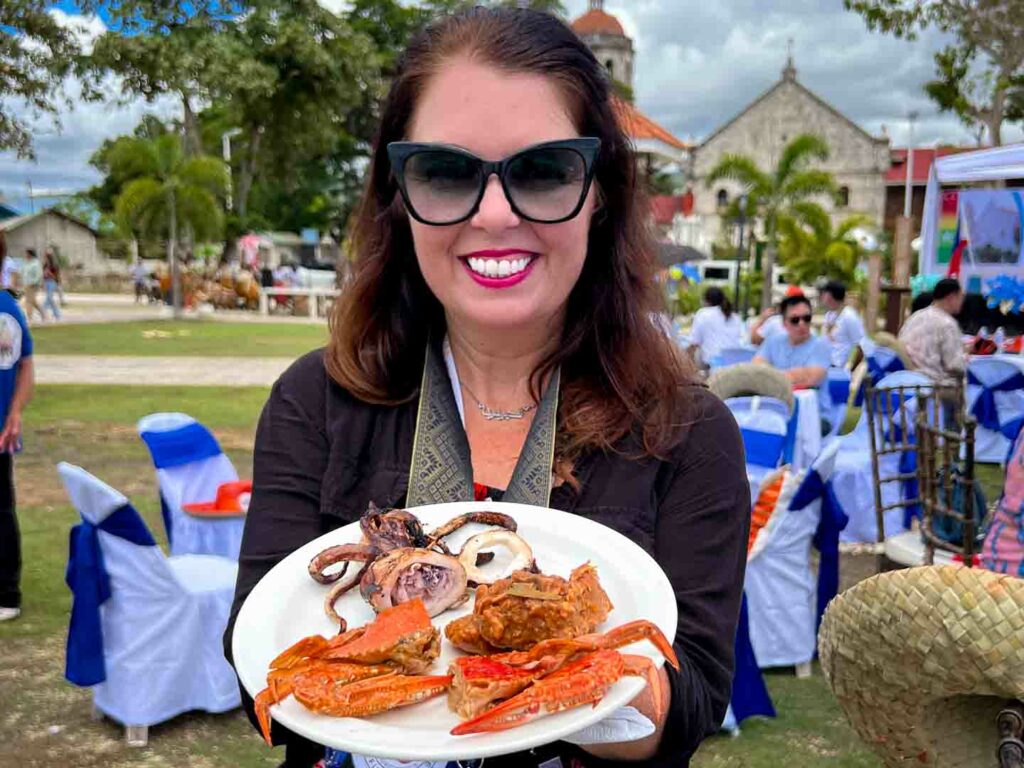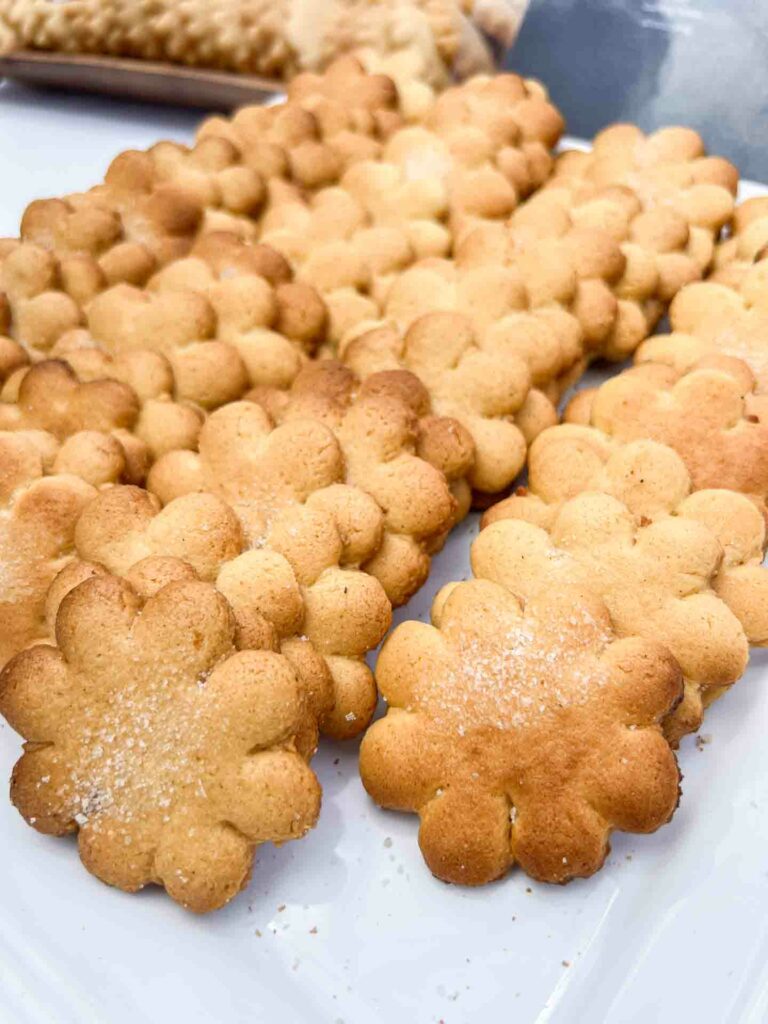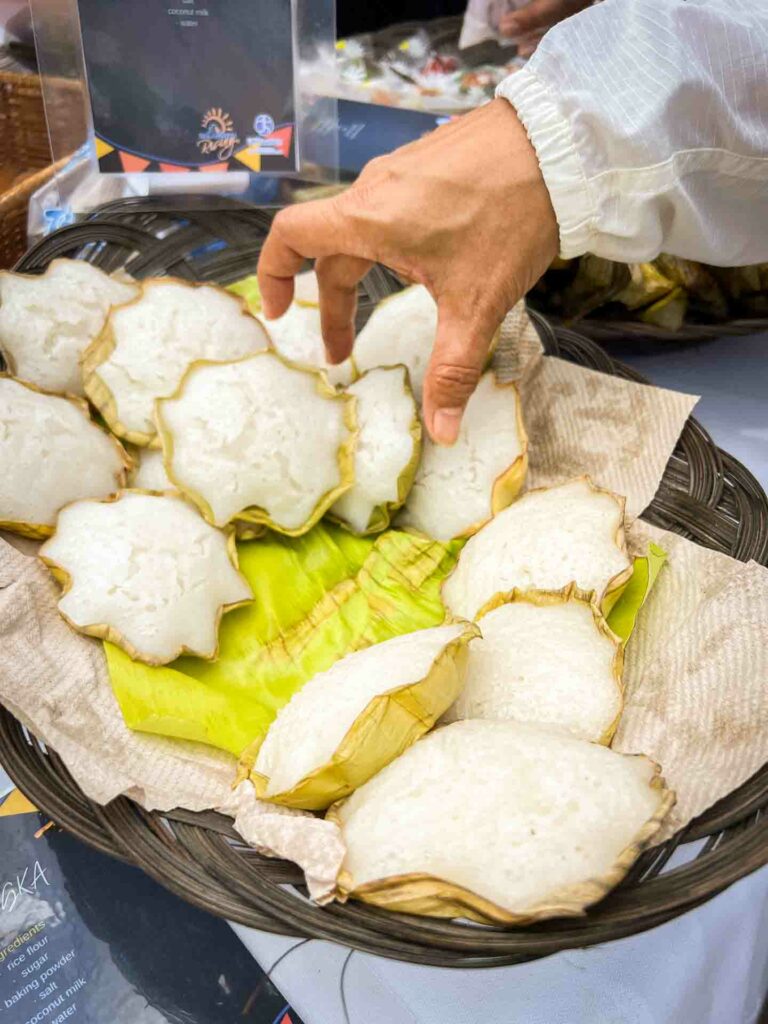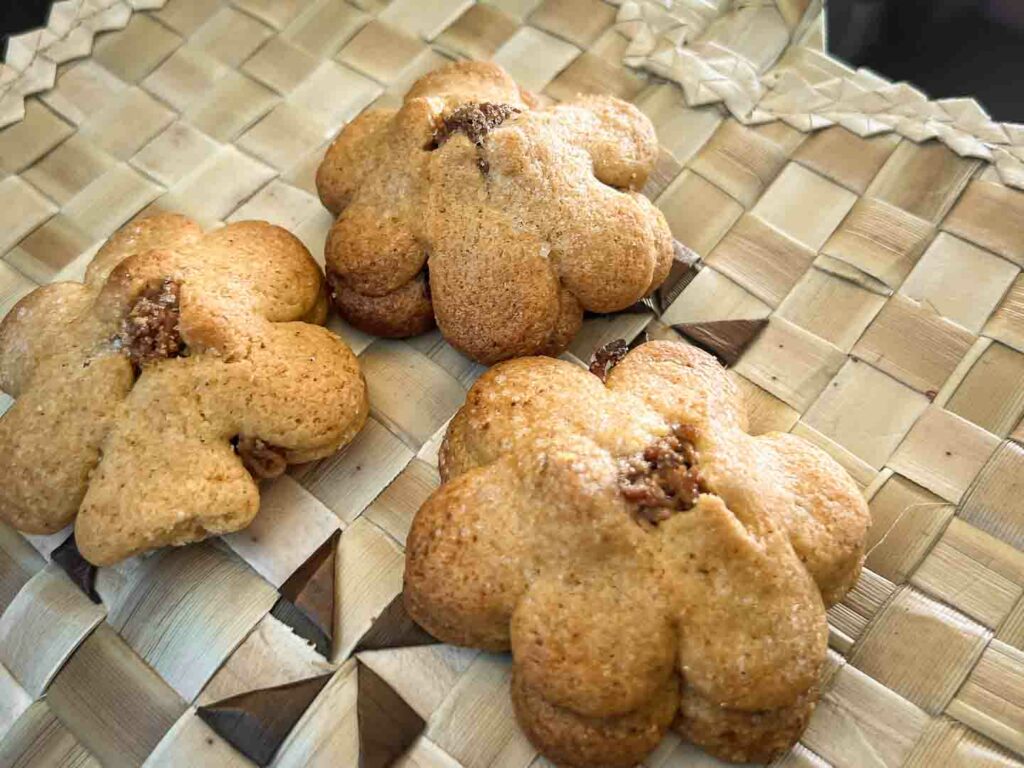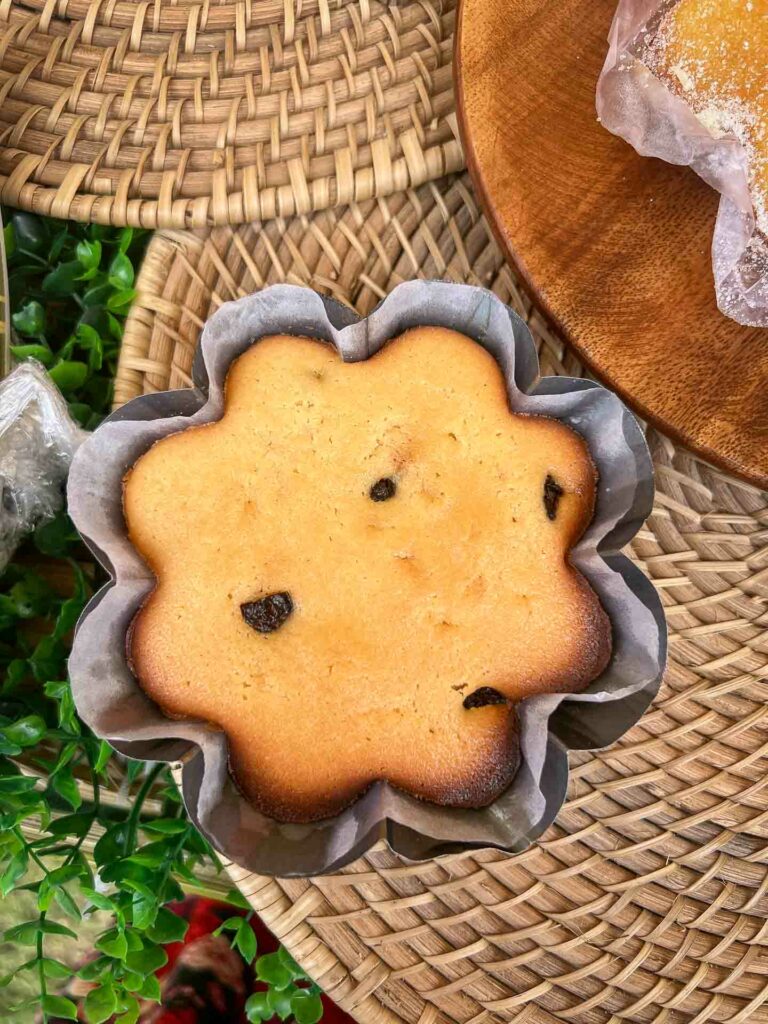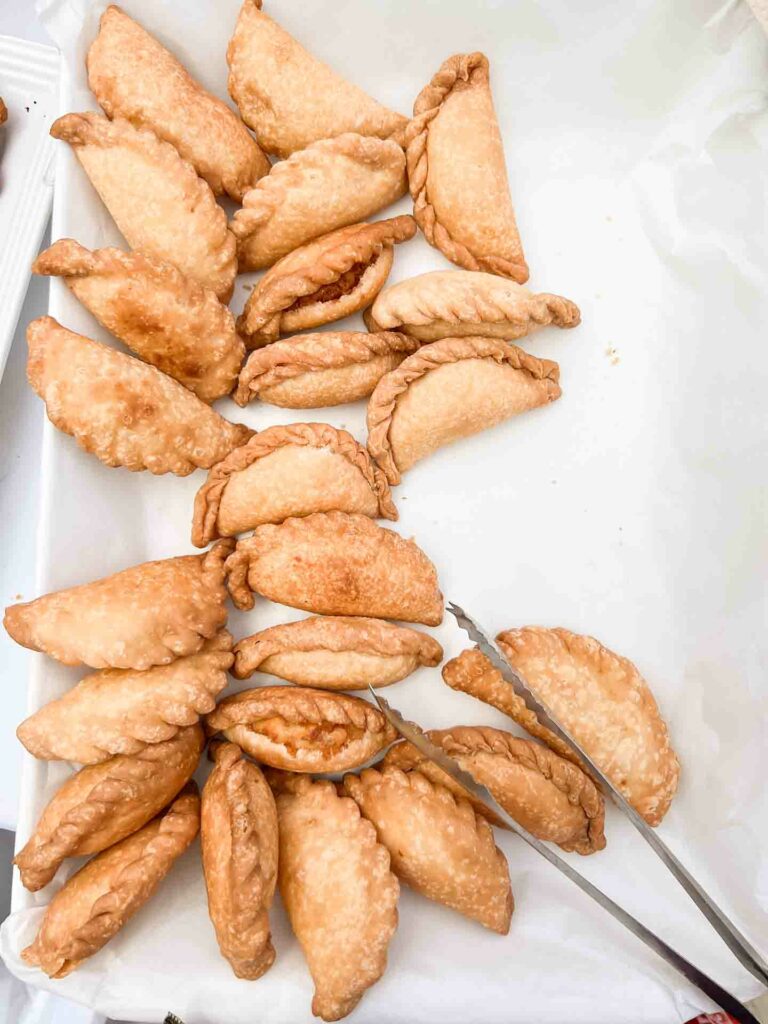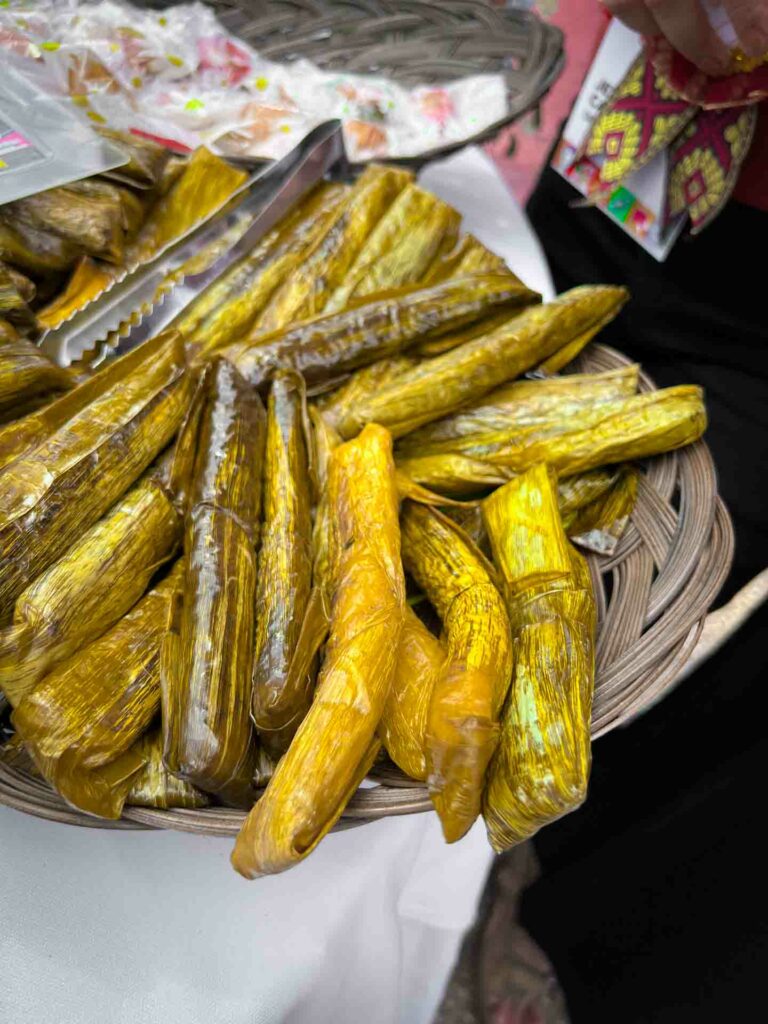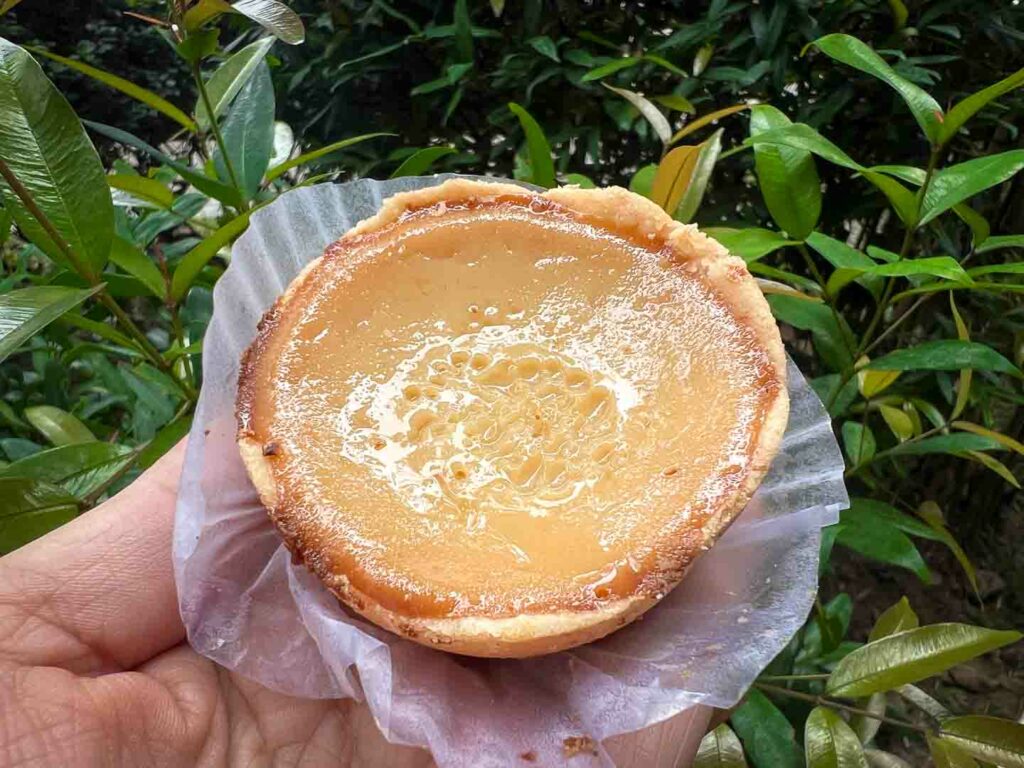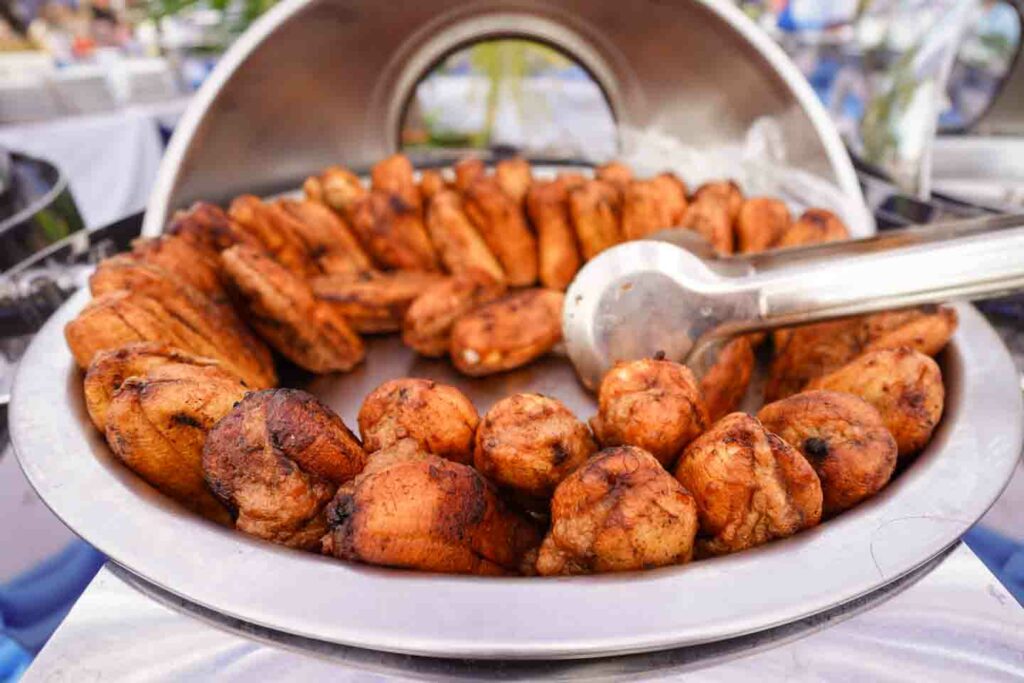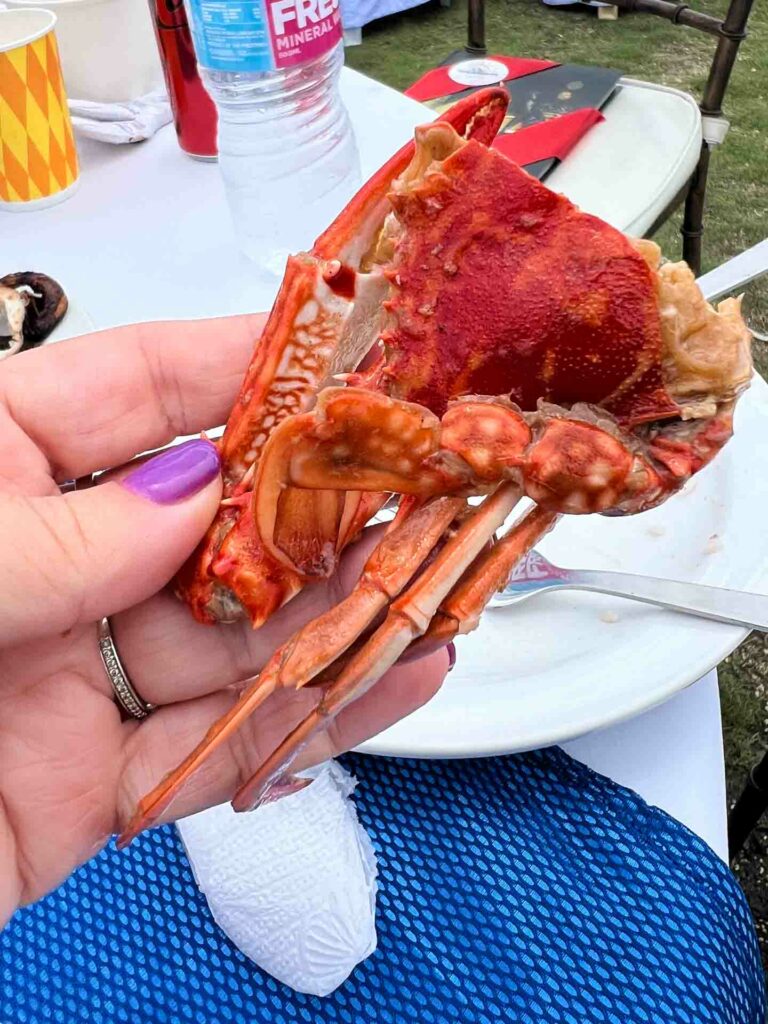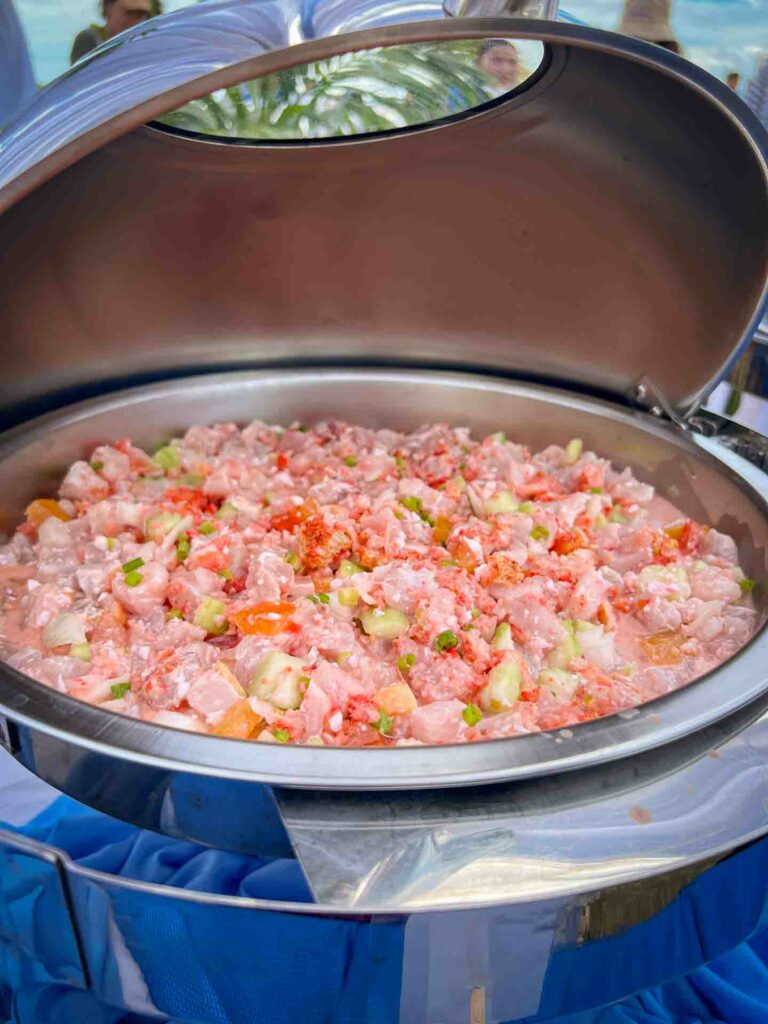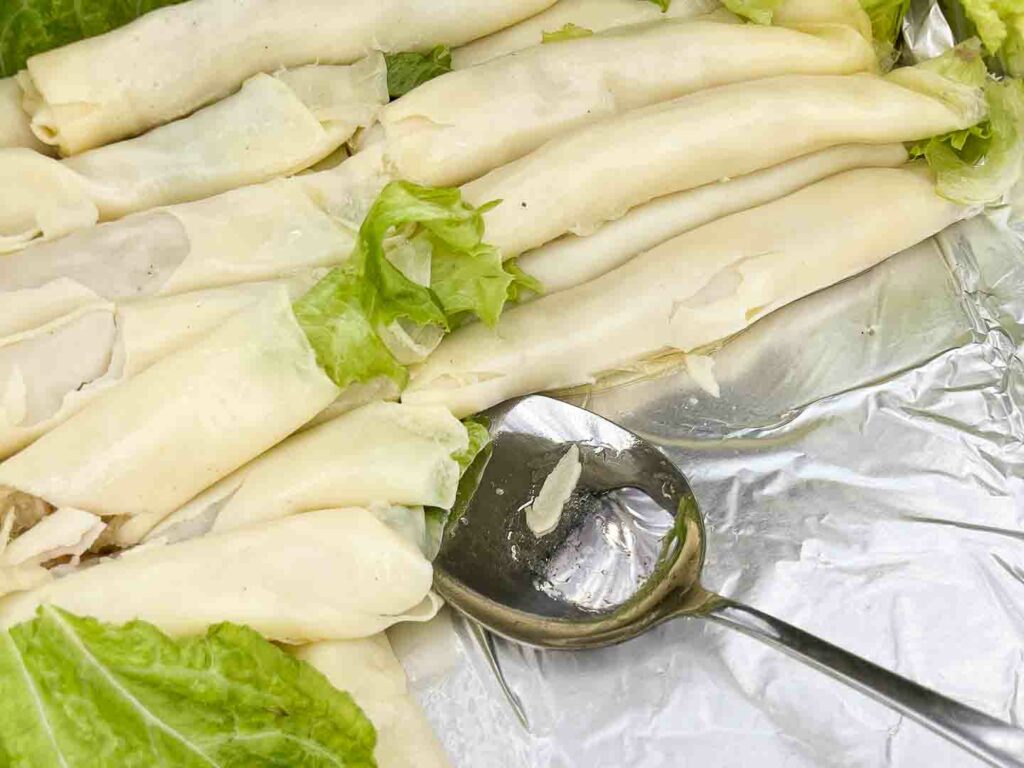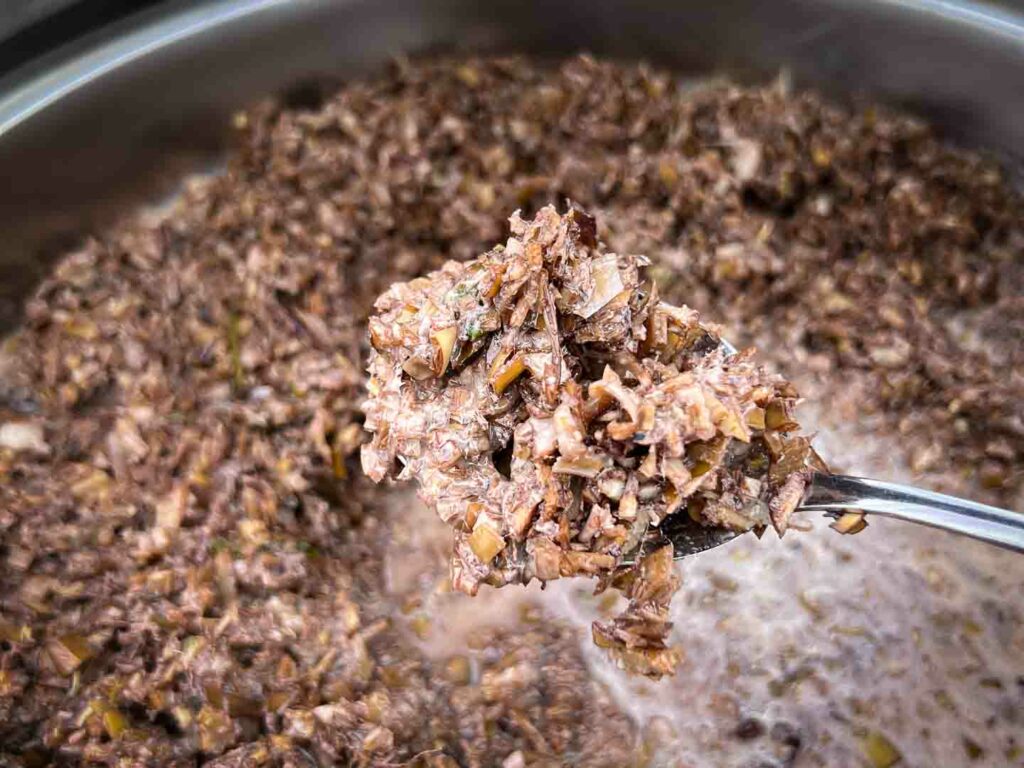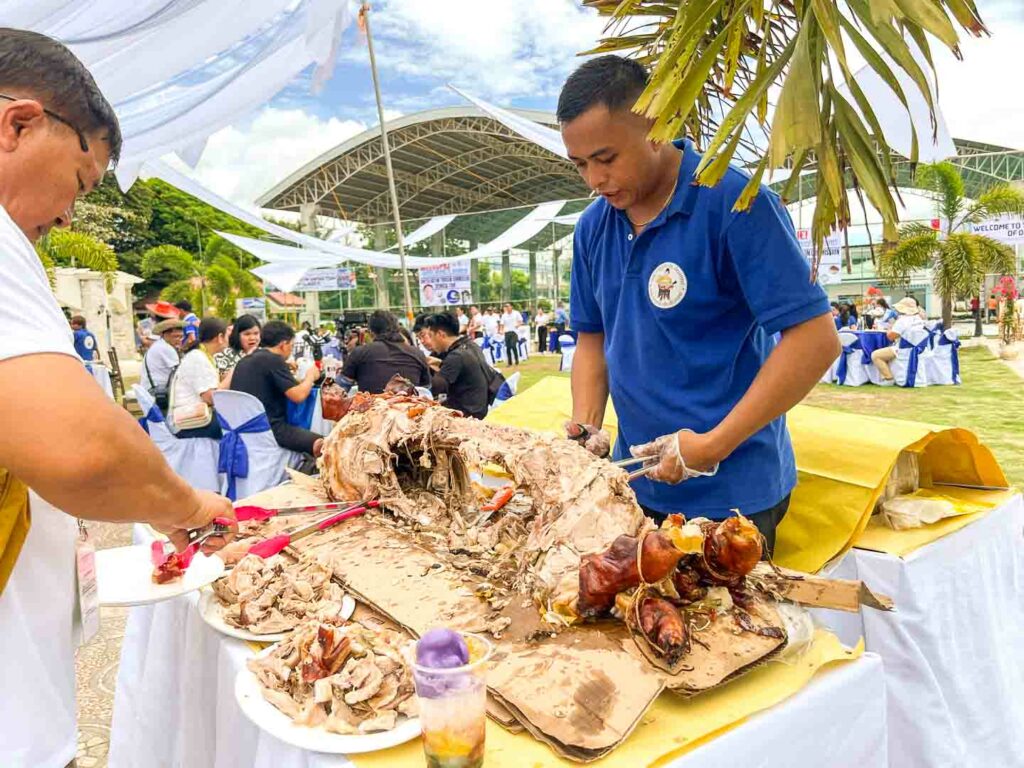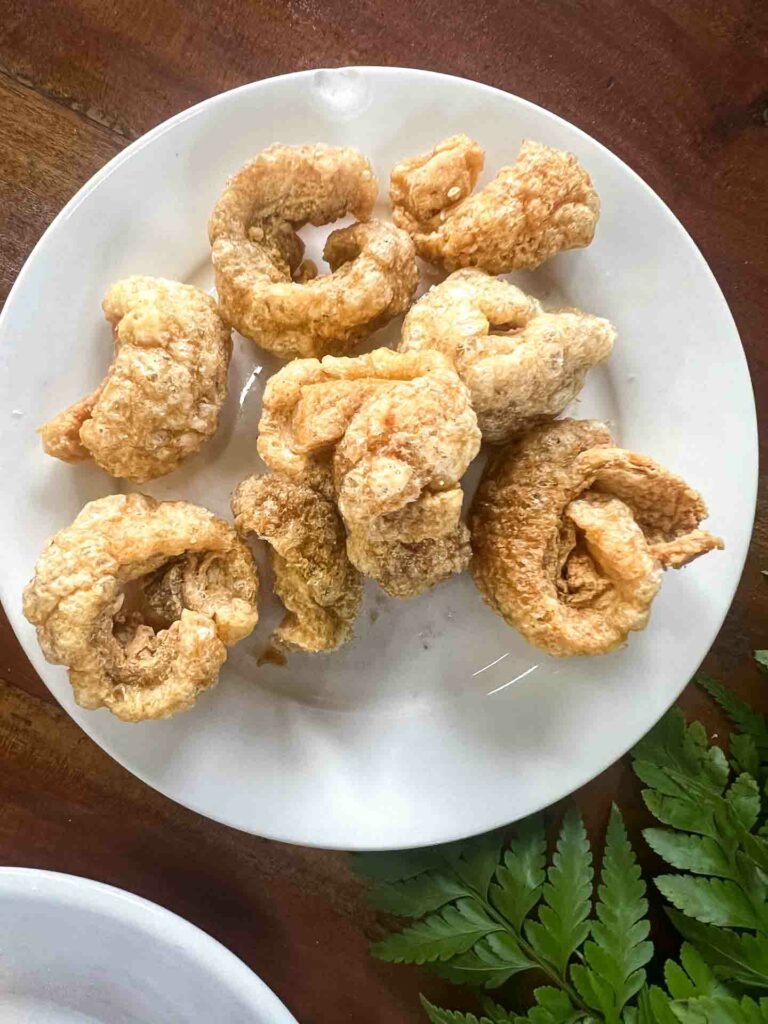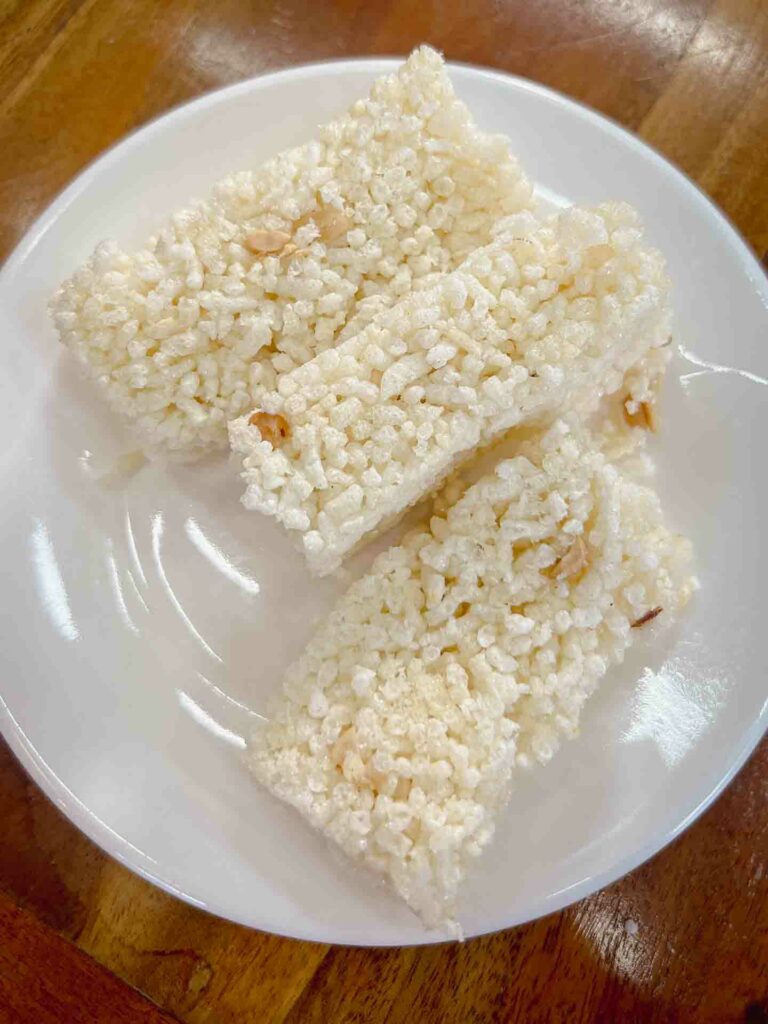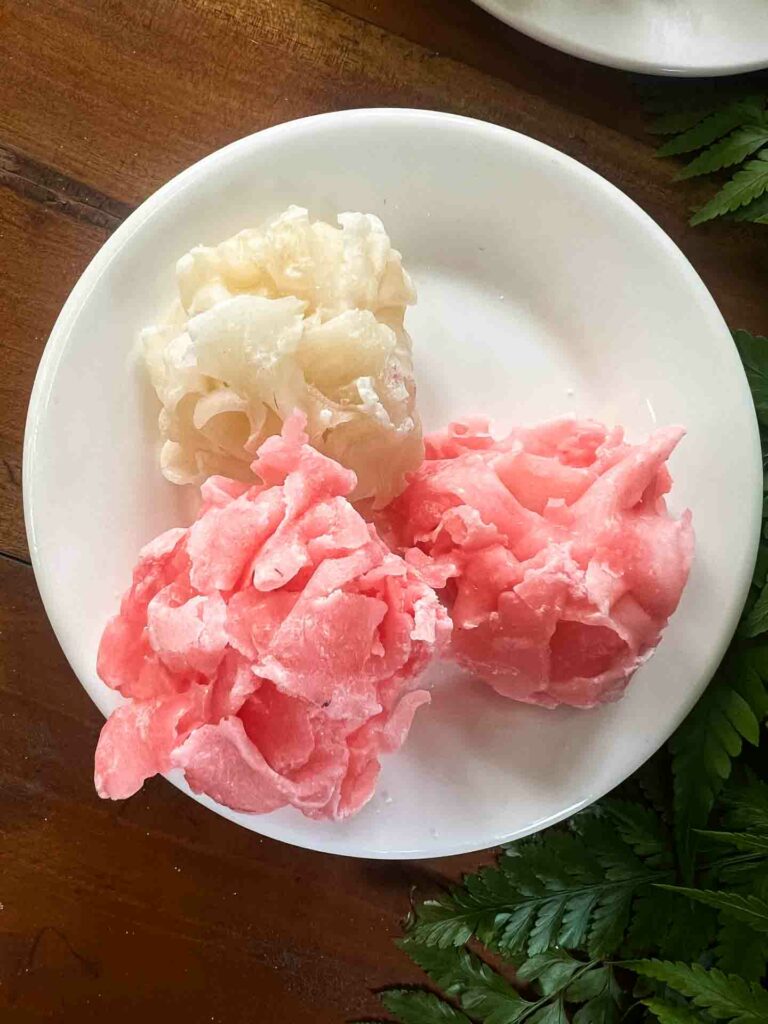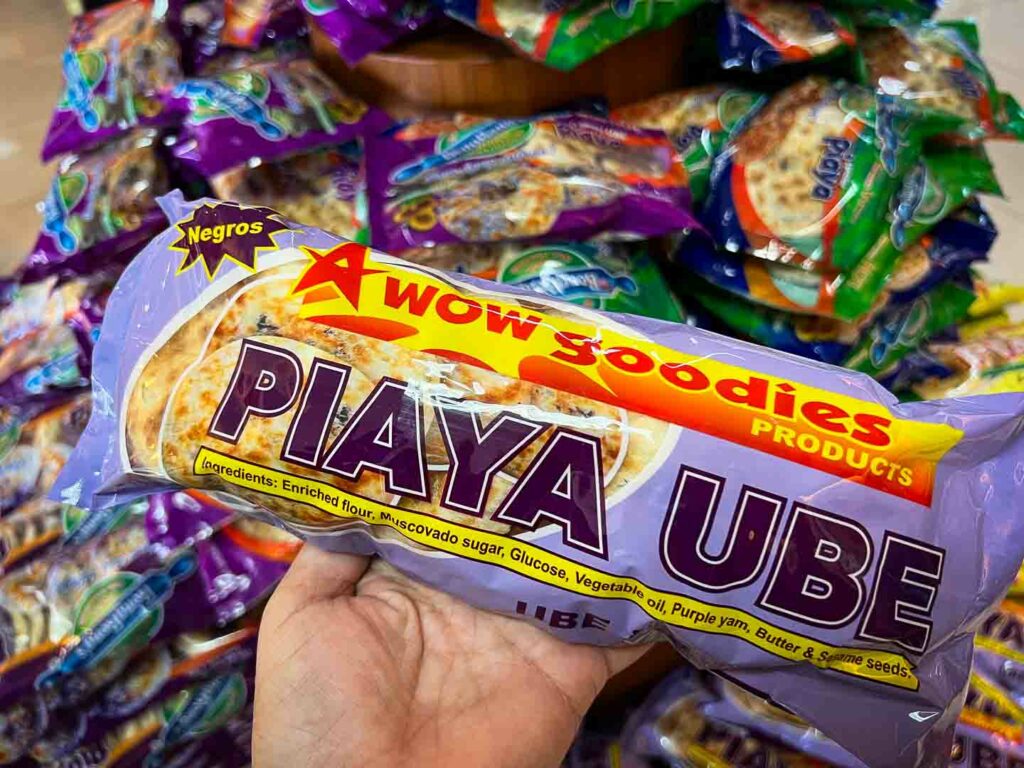While Cebu City gets all the attention as a hot food destination, south Cebu foods are worth a road trip. Tradition, authenticity and history tell a story on a plate you won’t want to miss.
Dalaguete Delicacies
Dalaguete is a small coastal town in the Philippines, roughly a two-hour drive from Cebu City.
And although it’s not a major tourist attraction, it’s one of the most important cities for food in Cebu.
Dalaguete is known by locals as the Dalaguete is known as the Vegetable Basket of Cebu. Most of the fresh vegetables you see in Cebu markets come from this area.
Traditional Filipino Foods
Most tourists come to visit Osmeña Peak, Cebu’s highest point, for stunning views and then move onto another town.
But it’s worth staying longer to eat as its home to so many great traditional Cebuano foods.
.Tostado de Santander
Tostado de Santander is a popular snack in South Cebu. Although tostado means toasted this Filipino cookie isn’t toasted.
It is a baked cookie that has a crunchy texture and a sweet, buttery flavor.
This treat is influenced by Spanish cuisine, reflecting the Philippines’ colonial history.
Although you can find it all over Cebu, it is most famous in Santander in South Cebu where there is an annual festival each April.
It is often enjoyed with coffee or sikiwate (hot chocolate), making it a perfect snack for any time of the day.
Bibingka
Bibingka is a traditional Filipino rice cake made from rice flour and coconut milk. It is typically cooked in clay pots lined with banana leaves.
This dish has Spanish influences, evident in its preparation and ingredients. Similar rice cakes can be found in Indonesia, known as “kue serabi.”
Bibingka is also a traditional food in Manila, especially popular during Christmas, but also one of the most common merienda foods in Cebu.
.Podrida
Podrida is a sweet pastry filled with rich, sugary fillings. This treat has Spanish origins, reflected in its name and preparation.
It resembles empanadas found in Latin American countries, though podrida is sweeter.
The pastry is flaky and buttery, filled with a variety of sweet fillings like coconut, pineapple, or ube.
It is a delightful snack that pairs well with coffee or tea, making it a popular choice for merienda.
Torta
The Spanish influence is evident in its name and cake-like texture. Spanish colonizers did not have cement in Cebu when building churches so the used local coral and egg white.
Instead of tossing the yolk, they taught locals how to make tortas and leche flan – two of the most common Filipino desserts in Cebu.
Torta is a soft, spongy cake that is a staple in South Cebu. It is made with flour, eggs, and sugar, often flavored with tuba, a local coconut wine.
In Argao bakers use pork fat to replace vegetable oil and still cook it in a traditional oven.
It’s a popular dessert all over Cebu and you’ll also find it in Oslob and outlying islands like Bantayan and Siquijor.
.Empanada
Coconut empanada are pastries filled with sweetened coconut meat.
This snack has Spanish roots, similar to empanadas found in Spain and Latin America.
The pastry is flaky and golden, while the filling is sweet and rich.
Bod Bod
Bod bod is a traditional Filipino delicacy made from glutinous rice and coconut milk. Wrapped in banana leaves, it is steamed to perfection.
This treat has indigenous Filipino roots, showcasing the local ingredients and cooking methods.
Bod bod has a chewy texture and a slightly sweet flavor. Bod bod is a common breakfast in South Cebu and often sold in markets.
There’s also a millet version of this food in Dumaguete.
.Leche Flan | Caramel Custard
Leche flan is a rich, creamy dessert made from egg yolks, condensed milk, and caramelized sugar.
This dessert has Spanish influences, similar to flan in Spain and Latin America. It has a smooth, velvety texture and a sweet, caramel flavor.
Leche flan is a popular dessert during celebrations and special occasions.
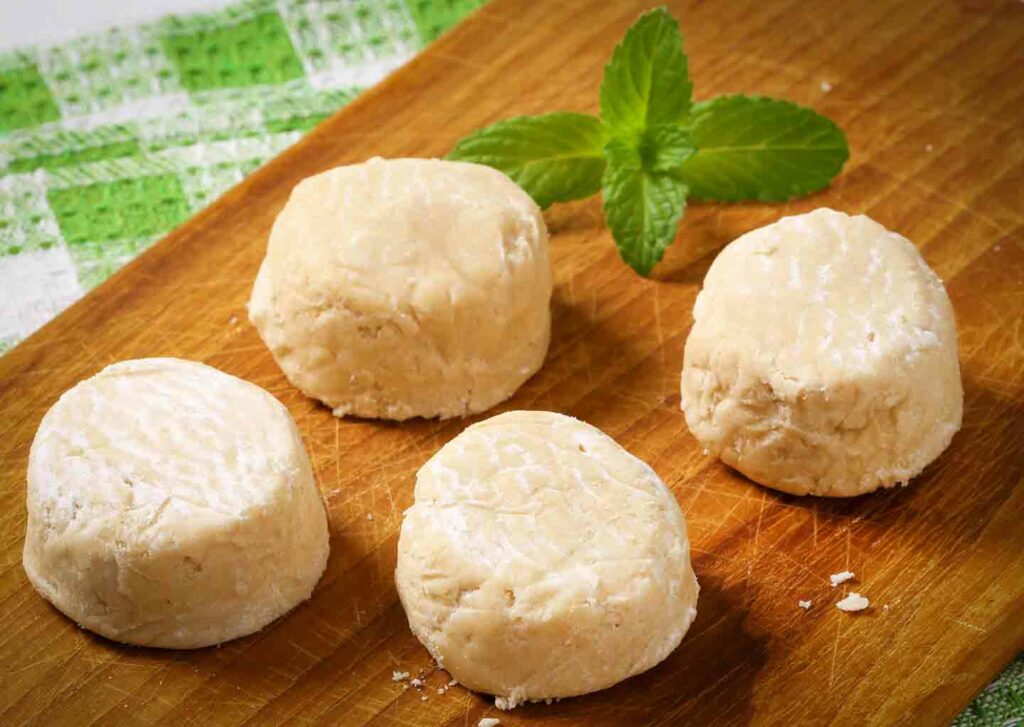
Polvoron
Polvoron is a crumbly, sweet candy made from toasted flour, powdered milk, sugar, and butter.
This treat has Spanish origins, similar to polvorones in Spain. They are also a common Cinco de Mayo dessert. It has a sandy texture that melts in your mouth.
Polvoron is often enjoyed as a snack or given as a gift. Its simple ingredients and delightful taste make it a popular treat in South Cebu.
Traditional Cebu Foods Famous in Dalaguete
Banana Meat
Banana meat is a unique dish where bananas are stuffed inside ground meat, then fried.
This dish has Indigenous Filipino roots, showcasing local creativity. Similar dishes are hard to find, making it unique to the Philippines.
The combination of sweet bananas and savory meat creates a delightful contrast.
Drinks in the Philippines
Mixed Pickled Vegetables | Atchara
Mixed pickled vegetables, known as atchara, is a tangy, sweet-sour condiment made from pickled green papaya and other vegetables.
This dish has Spanish influences, similar to escabeche.
It is often served as a side dish to complement grilled or fried meats. Atchara’s refreshing taste and crunchy texture make it a perfect palate cleanser.
.Alimango | Mud Crab
Mud crab, or alimango, is a popular seafood dish in South Cebu. The crabs are usually steamed or cooked in coconut milk, enhancing their natural sweetness.
This dish has indigenous Filipino roots, emphasizing the abundance of seafood in the region.
Similar dishes can be found in Singapore, known as chili crab.
Breakfast Restaurants in Poblacion Makati
Pusit | Squid
Squid, or pusit, is a versatile seafood dish in South Cebu. It can be grilled, fried or cooked in its ink.
This dish has indigenous Filipino roots, showcasing local seafood. Pusit is often served with a dipping sauce.
Kinilaw | Raw Fish Salad
Kinilaw is a traditional Filipino dish made from raw fish marinated in coconut vinegar, calamansi juice, and spices.
This dish has indigenous Filipino roots, similar to ceviche in Peru and other countries in Latin America.
The acidity of the marinade “cooks” the fish, giving it a unique texture and flavor. Kinilaw is often served as an appetizer or side dish.
Its fresh, tangy taste makes it a refreshing choice, especially in warm weather.
Filipino Kinilaw Recipe
Tuba | Coconut Wine
Tuba is a traditional Filipino drink made from the sap of coconut trees.
This drink has indigenous Filipino roots, reflecting the local coconut industry. Similar to palm wine in Africa, Tuba is a fermented beverage.
It has a sweet, slightly tangy flavor. Interestingly this is the same name of one of the traditional drinks in Mexico that is made similarly made from fermenting coconut tree sap.
Tuba can also be distilled into a stronger alcoholic drink called lambanog. Its unique taste makes it a cultural staple in South Cebu.
.Fresh Lumpia | Fresh Spring Roll
Fresh Lumpia is a Filipino spring roll filled with vegetables, shrimp, and sometimes pork, wrapped in a soft crepe.
This dish has Chinese influences, similar to fresh spring rolls in Vietnam.
Fresh Lumpia is often served with a sweet peanut sauce, enhancing its flavor. Its fresh, crunchy texture and savory filling make it a healthy and delicious choice.
It is a popular snack or appetizer in South Cebu.
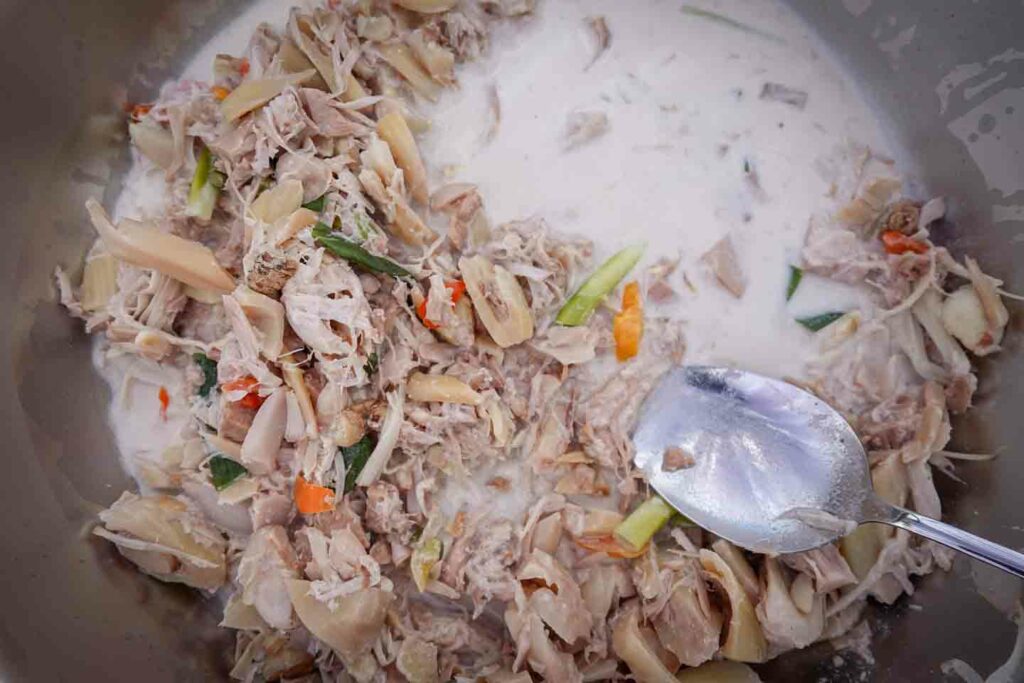
Gulai | Young Jackfruit Coconut Curry
Gulai is a flavorful curry made with young jackfruit and cooked in coconut milk and spices. This dish has Indonesian and Malaysian influences, similar to gulai in those countries.
The young jackfruit absorbs the rich, creamy flavors of the coconut milk and spices, creating a hearty and satisfying dish.
Gulai is often enjoyed with rice, making it a filling meal. Its unique combination of flavors and textures makes it a standout dish in South Cebu.
.Puso Ng Saging | Banana Blossom in Coconut Milk
Puso ng saging is a traditional Filipino dish made from banana blossoms cooked in coconut milk.
This dish has indigenous Filipino roots, showcasing local ingredients. Similar dishes can be found in Thai cuisine, such as banana blossom salad.
The banana blossoms have a tender texture and mild flavor, which pairs well with the rich coconut milk.
Puso ng saging is often served as a side dish, complementing various main courses.
Lechon
Lechon is a famous Filipino dish consisting of a whole pig roasted to perfection.
This dish has Spanish influences, similar to lechón in Spain and Latin America. The pig is marinated and stuffed with herbs, then roasted until the skin is crispy.
Lechon is often the centerpiece of festive occasions and celebrations. Its crispy skin and juicy meat make it one of the most popular Filipino foods.
Carcar Traditional Foods
Of course Carcar is known for its fantastic lechon. Many people visit the city to eat it at the local public market.
But if you’re driving through Carcar it is mandatory to buy a pasalubong for family and these are available at local markets, Pasalubong Center, and the new tourist rest stop.
Chicharron | Pork Crackling
Chicharron is a crunchy snack made from deep-fried pork skin.
This dish has Spanish origins, similar to chicharrones in Spain and Latin America.
The pork skin is seasoned and fried until crispy, creating a savory and addictive snack. Chicharron is often enjoyed with vinegar or spicy dipping sauces.
Its crunchy texture and savory flavor make it a popular snack in South Cebu.
.Ampao | Crispy Rice Square
Ampao is a traditional Filipino snack made from puffed rice and caramelized sugar.
This treat has indigenous Filipino roots, similar to rice krispies in Western countries.
The puffed rice is mixed with caramelized sugar, then shaped into squares.
Ampao has a light, crispy texture and a sweet flavor. It is often enjoyed as a snack or dessert, especially during festivals and celebrations.
Bukarilyo | Bocarillo
Bukarilyo, also known as bocarillo, is a sweet treat made from young coconut strips cooked in sugar.
This delicacy has Indigenous Filipino roots, showcasing local coconut products.
The coconut strips are cooked until they are tender and infused with the sweetness of the sugar.
This treat is similar to candied coconut found in other tropical countries. Bukarilyo has a chewy texture and a rich, coconutty flavor.
It is often enjoyed as a snack or given as a gift. Its delightful taste and simplicity make it a favorite among locals and visitors in South Cebu.
Exotic Filipino Fruits
Bukayo
Bukarilyo (bocarillo) and bukayo are traditional Filipino treats made from coconut and sugar. However, they differ primarily in the type of coconut used and their texture.
Bukarilyo uses young coconut strips, resulting in a tender and chewy texture.
While Bukayo uses grated mature coconut, giving it a more fibrous and chewy consistency with a caramelized flavor.
.Piaya
Piaya is a sweet, flaky flatbread filled with muscovado sugar.
This treat has Chinese influences, similar to mooncakes. The dough is rolled out, filled with the sweet muscovado, and then cooked until golden brown.
Piaya has a crispy exterior and a rich, sweet filling. It is often enjoyed as a snack or dessert, especially with coffee or tea. Its unique flavor and texture make it a popular treat in South Cebu.
